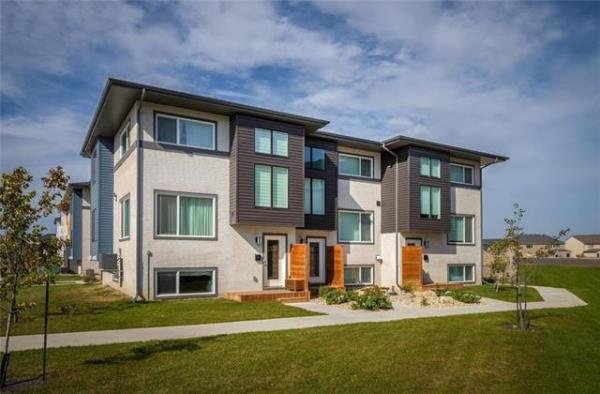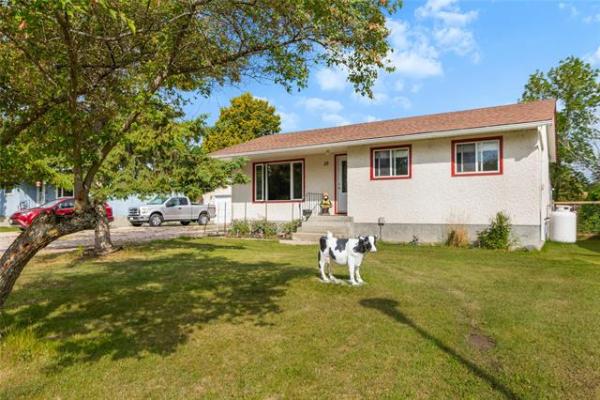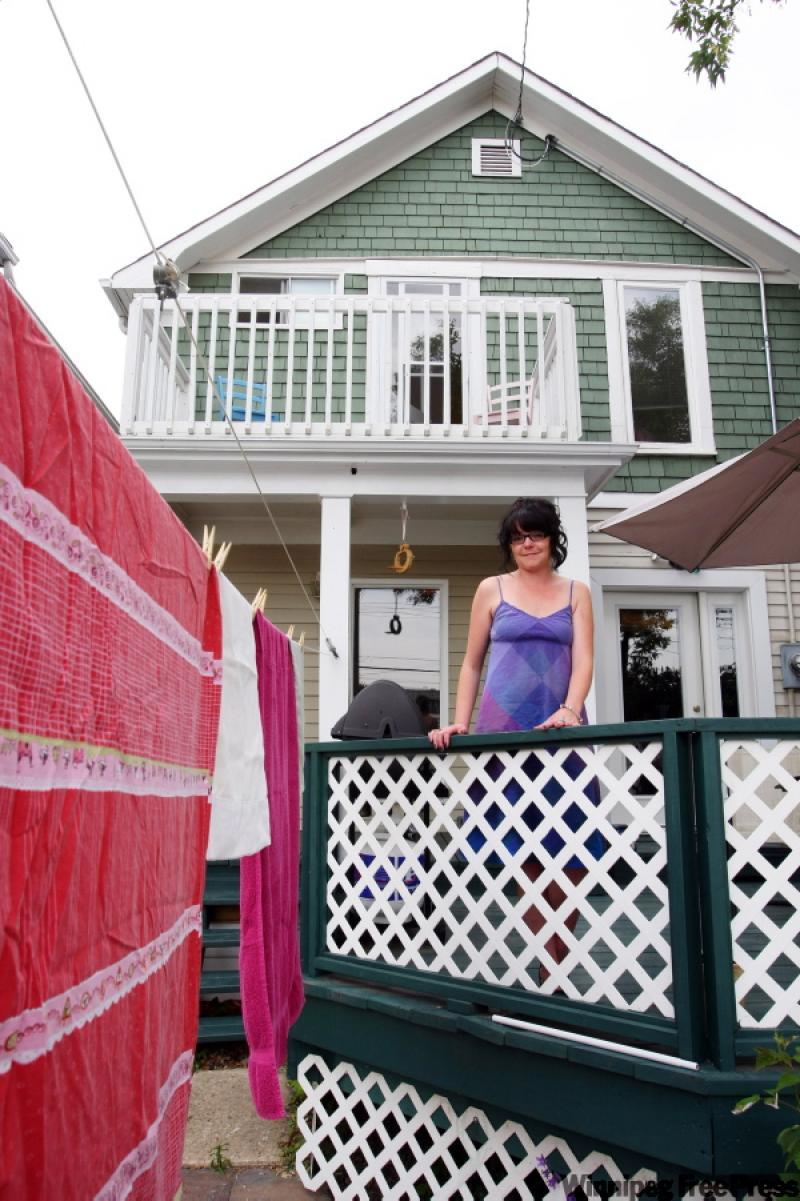
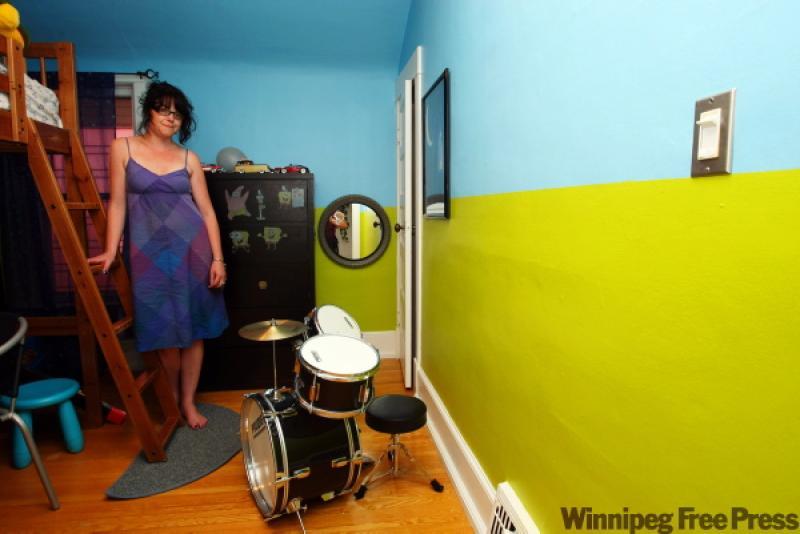

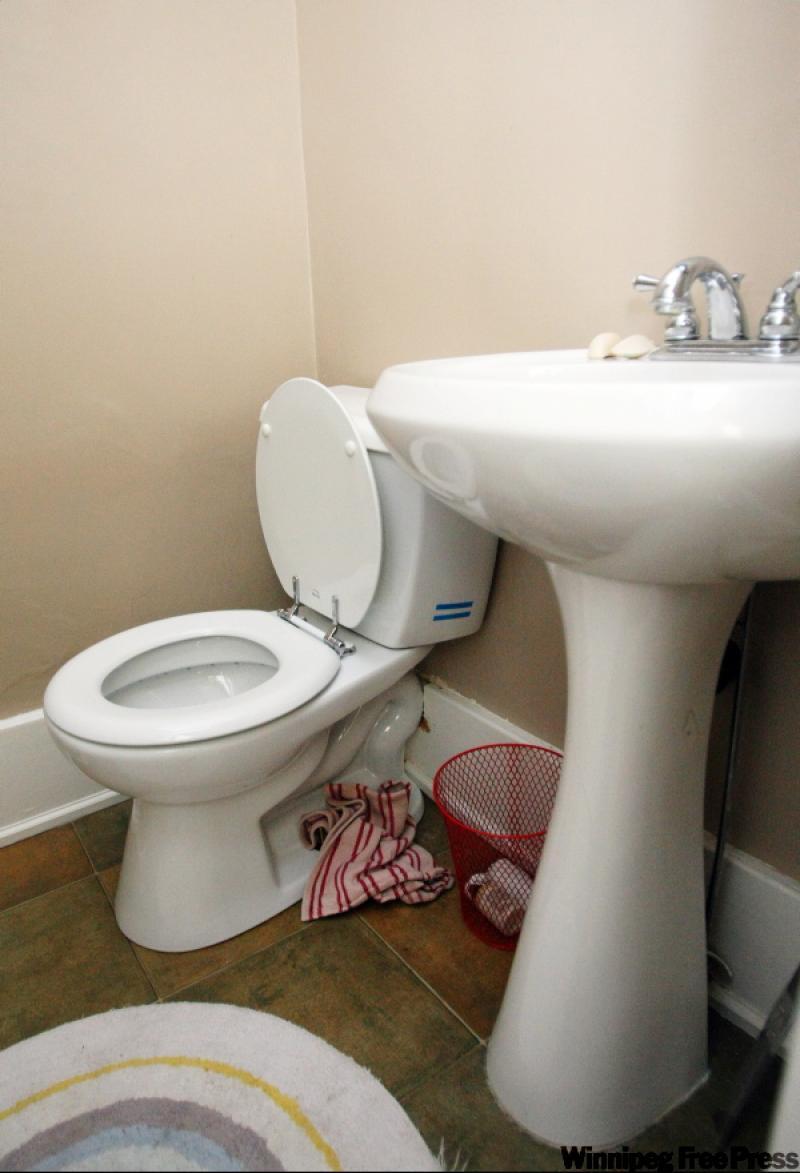
Where Ceilidh Corcoran lives, neighbours refer to her as "the green girl."
Since Corcoran moved in about two months ago, she's been slowly upgrading her 94-year-old Edmonton home to fit her needs and her style -- and she's done it all with Mother Nature in mind.
There have been a few big-ticket changes -- energy-efficient appliances and dual-flush toilets. A new clothesline runs almost the length of her backyard. But there are the small things, too.
Every light bulb in her home is an energy-efficient compact fluorescent light bulb. The carpet tiles she just ordered for her basement are made from recycled fibres. The paint on the walls of her two children's rooms contains no volatile organic compounds, or VOCs, which are often found in traditional paint and are harmful to the environment.
"Why not do it this way?" Corcoran asks. "If I'm going to do it, that's all the renovation that should be happening."
When people talk about retrofitting their homes and making their living spaces more environmentally friendly, thoughts immediately turn to the extensive and expensive -- installing new windows, adding insulation -- the black-diamond endeavours of the do-it-yourself home-reno world that many homeowners balk at.
But you don't have to give your home a complete overhaul to think about the environment. It's easier than ever to incorporate eco-friendly alternatives into any home-improvement project, even an annual new-paint-and-rug facelift.
"Certainly, there is a lot more public awareness about using more eco-friendly materials in homes, whether building from scratch or renovating," says Andrea Jones, the Edmonton woman behind Raisingspaces.com, a resource website for people interested in green home improvement.
"I think the interest is there, but the availability of products has been sketchy until recently."
Products such as bamboo flooring, recycled-paper countertops, natural-fibre carpets and no-VOC paints have become much more accessible thanks to independent retailers like Jones, who is just starting a home business, and Carbon environmental boutique in downtown Edmonton.
"I think there is a consumer demand now," says Allison MacLean, owner of Carbon. "I think people are voting with their dollars for those safer products, and manufacturers are responding."
Both MacLean and Jones launched their businesses when they became homeowners and noticed a dearth of eco-friendly interior-design options on the market.
"When I purchased my home with my husband about six years ago," Jones says, "I was really excited to implement these (Earth-friendly) things at home, but found it surprisingly difficult."
While Jones says she has been interested in sustainability issues since she was a teenager, MacLean calls herself a "totally average" person. "I'm not a hippie. I'm not a granola girl," she says.
But having children made her more wary as a consumer.
"You start questioning what you're feeding them, what they're surrounded by and what they put in their mouths to chew on," says MacLean.
Her research into what goes into the products found in typical households led to alarming results.
"It really, really hit me that, 'Gosh, I didn't know this. Most people must not know this,'" MacLean says.
Now is the time to be green, Corcoran says.
"Everything has come down in price, and it's easier to get. Compared to the stuff that I was doing five years ago, it was way more difficult to get products then. Even paint -- you couldn't get this colour in paint," she says, pointing to the bright blue stain on her son's bedroom wall.
"And it wasn't even no-VOC, it was low-VOC. You couldn't get anything with any kind of tint really; it was pastel. Now I can get every colour in the rainbow."
Corcoran still has a lot of work ahead of her, but she's looking forward to the results and to eventually going solar.
"Once it's all done I think I'll be fully green," she says.
-- Canwest News Service
Here's how to make the switch
PAINTS
Switching from traditional paint to no-VOC paint is the easiest change to make if you're interested in making green home improvements, says Allison MacLean, owner of Edmonton's Carbon environmental boutique.
"It's not a big investment. If you're painting your house, you're going to pay $500 to $600 anyway, so why choose a toxic version when you can have a zero-VOC version?" asks MacLean, who carries zero-VOC paints by Mythic and AFM Safecoat.
Both are premium-quality paints, she says, available at prices comparable to most other options on the market.
Perhaps most appealing, though, is the fact that the paint smells nice. Really nice. "I had one painter say it smells like pina coladas," she says, laughing. "It's very low-odour."
MacLean also carries no-VOC paint by AFM Safecoat and old-fashioned milk paint, which is purchased as a brick of mineral pigment and milk protein powder that are mixed into paint at home.
Milk paint, though charming, is harder to use, MacLean warns. "It's the application -- you've got to work it in," she says. "I've heard it described as a labour of love."
FLOORING
Eco-Timber floors are "environmental in two ways," MacLean says.
Free of formaldehydes and harsh solvents, they're a low-VOC flooring option harvested from forests that are managed in an environmentally and socially responsible manner, as certified by the Forest Stewardship Council.
Another option is bamboo flooring, carried by both Carbon and Andrea Jones of Raising Spaces. Bamboo, says Jones, "not only is rapidly renewable, but uses low-VOC glues and stains." The same goes for cork flooring, also available through Jones.
In tiling, Jones has three lines of 100 per cent recycled glass tile, while MacLean has marmoleum, made of cork flour, wood flour, linseed oil, natural resins and mineral pigments.
This, says MacLean, was once known as linoleum, before "the industry started replacing the traditional linoleum with synthetics."
Marmoleum is naturally anti-microbial and anti-static, MacLean says.
CARPETS
Carbon carries low-VOC carpet tiles by Flor, made from natural fibres, undyed wool and recyclable nylon.
The carpet tiles come in 20-by-20-inch squares held together and to the floor with non-toxic stickers, which allows the carpet to be used in a variety of ways.
"I can turn it into a runner -- just break it apart and change the shape of it," MacLean says.
"If you step on one with tar on your shoe, you can take it to a countertop and scrub it."
At the end of the carpet's life, Flor will take tiles back to be recycled.
COUNTERTOPS
Paperstone makes countertops out of recycled paper. The product, which behaves much like wood, can also be purchased in sheet form for furniture construction.
Icestone is Paperstone's recycled-glass cousin, made from bits of recycled glass and concrete that are pressed and rendered like granite. Both are available at Carbon.


